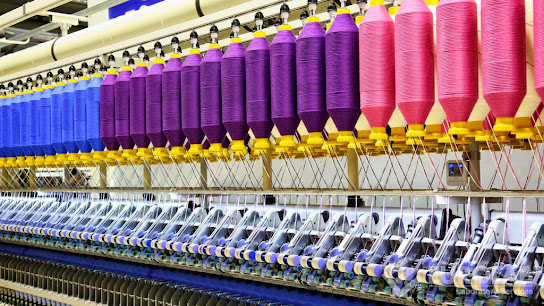Global E-Textiles: Revolutionizing Fashion with Smart Wearable Technology
 |
| Global E-Textiles |
Electronic textiles, or simply e-textiles, are
textiles with embedded electronics and some fiber materials with electrical
properties and useful functions. Electronic textiles are fabrics that can
conduct electricity. Connected to electronic components, it senses changes in
its environment and reacts by sending light, sound or radio waves. Electronic
textiles (e-textiles) are fabrics in which electronics and connections are
woven.
E-textiles, also known as electronic textiles or
smart fabrics, are transforming the fashion industry by seamlessly integrating
electronic components into fabrics. These advanced Global
E-Textiles are not only fashionable but also functional, offering a
range of innovative applications from health monitoring to interactive
clothing. The global e-textiles sector is rapidly evolving, blending technology
and design to create garments that enhance our daily lives.
The
Evolution of E-Textiles
E-textiles have come a long way since their
inception. The concept originated from the need to combine the flexibility of
textiles with the capabilities of electronic devices. Early developments
focused on embedding simple electronic circuits into fabrics, but today’s
e-textiles are much more sophisticated. Modern e-textiles can incorporate
sensors, conductive threads, and microcontrollers, enabling complex
functionalities such as body movement tracking, temperature regulation, and
even data transmission.
Key Innovations in E-Textiles
Health
and Fitness Monitoring
One of the most promising applications of e-textiles
is in health and fitness monitoring. Smart fabrics can track vital signs such
as heart rate, respiration, and body temperature. These textiles can be used in
wearable devices like shirts, bras, and socks, providing continuous health
monitoring without the need for bulky equipment. For instance, athletes can
benefit from e-textiles that monitor their performance and provide real-time
feedback, helping them optimize their training routines.
Interactive
Fashion
E-textiles are also revolutionizing the fashion
industry by enabling interactive and customizable clothing. Designers are
experimenting with fabrics that change color or pattern based on environmental
stimuli or user input. This technology allows for dynamic fashion statements
and personalized style, where garments can adapt to the wearer’s mood or
surroundings. Additionally, some e-textiles can interact with smartphones and
other devices, adding a new dimension to fashion interactivity.
Environmental
Sensing
E-textiles can be embedded with sensors to detect
environmental factors such as air quality, UV exposure, and pollution levels.
This application is particularly valuable in urban settings, where individuals
can benefit from real-time data about their environment. For example, a jacket
equipped with air quality sensors can alert the wearer to high pollution
levels, helping them take preventive measures to protect their health.
Challenges
and Opportunities
Despite the exciting advancements, the e-textiles
industry faces several challenges. Durability is a major concern, as electronic
components must withstand the rigors of daily wear and washing. Researchers are
working on developing more robust and washable electronic textiles that
maintain their functionality over time. Additionally, integrating power sources
that are flexible, lightweight, and long-lasting remains a technical hurdle.
On the opportunity front, the growing interest in
wearable technology is driving innovation in e-textiles. Collaboration between
textile manufacturers, technology companies, and fashion designers is fostering
the development of new products that push the boundaries of what textiles can
do. As technology continues to advance, we can expect e-textiles to become more
prevalent and accessible, opening up new possibilities for everyday use.
The
Future of E-Textiles
The future of e-textiles is bright, with ongoing
research and development paving the way for even more sophisticated
applications. In healthcare, we may see smart bandages that monitor wound
healing and transmit data to medical professionals. In sports, advanced
e-textiles could provide detailed biomechanical analysis to prevent injuries
and enhance performance. Everyday clothing could soon come with built-in
features such as climate control and wireless charging capabilities.
Moreover, the integration of artificial intelligence
and machine learning with e-textiles holds the potential to create garments
that learn from and adapt to the wearer’s habits and preferences. Imagine a
shirt that adjusts its temperature based on your activity level or a dress that
changes its color scheme to match your calendar events. These innovations could
revolutionize not only fashion but also the way we interact with technology on
a daily basis.
Global e-textiles are at the forefront of a
technological revolution in fashion, merging the worlds of style and functionality.
As advancements continue to unfold, these smart fabrics will become
increasingly integrated into our lives, offering new ways to enhance health,
convenience, and personal expression. The journey of e-textiles is just
beginning, and the possibilities are as limitless as the creativity of the
designers and technologists driving this exciting field forward.
Get more insights on Global
E-Textiles



Comments
Post a Comment